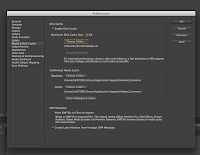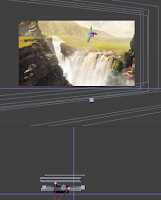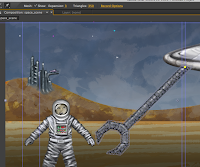Challenge, oh challenge. I've to come up with a dynamic pose. And there has to be background.
Unfortunately I haven't manage to finish this piece on time, but hopefully one day I'll get back to it.


 Showcase Spectacular took place at the Corn Exchange between 22-23 of November. I took part together with students from other courses (illustration, graphic design, fine art). Thanks to the awesome guys from JuJu and James from Student Union we got a really neat gallery space and a selling table. Our task was to put exhibition together, come up with a name, promotion and posters. Our group went with the LCA Collective name, which works realy good, since we are all Leeds Colege of Art students, with the range of work (watercolours pieces, massive oil painting, funky marker drawings, embroidery).
Showcase Spectacular took place at the Corn Exchange between 22-23 of November. I took part together with students from other courses (illustration, graphic design, fine art). Thanks to the awesome guys from JuJu and James from Student Union we got a really neat gallery space and a selling table. Our task was to put exhibition together, come up with a name, promotion and posters. Our group went with the LCA Collective name, which works realy good, since we are all Leeds Colege of Art students, with the range of work (watercolours pieces, massive oil painting, funky marker drawings, embroidery). On Friday before the event we went down to Corn Exchange to mount our work. Since the exhibitions I did last year, it was fairly easy for me, as I already got all my work framed. Also this year I had my business cards which I placed right next to my work (and on the table). I tried to have a good variety of pieces on the wall, some of them Christmas themed. I've also made bunch of cards and prints to sell.
On Friday before the event we went down to Corn Exchange to mount our work. Since the exhibitions I did last year, it was fairly easy for me, as I already got all my work framed. Also this year I had my business cards which I placed right next to my work (and on the table). I tried to have a good variety of pieces on the wall, some of them Christmas themed. I've also made bunch of cards and prints to sell. Matt Forsythe is a comic artist, who worked on Adventure Time series for 2 years. He didn't went to art school and have a degree in political science. However he was motivated and determined enough to improve his drawing skills and used art forum to get feedback and crits. Ojingogo was the first graphic novel from him that got published, followed by Jinchalo. Made during his stay in Korea, Ojingogo is an abstract, wordless comic with a very cute character. What's really interesting is the fact that this little character was drawn on a pitch for AT. Speaking of which, Adventure Time is a storyboard driven show (like Sponge Bob Square Pants). It takes around 5 weeks to complete storyboard which is then made into an animatic by storyboard revision team (which basically works out which bits needs to be animated, record voices, test pacing of the episode). Completed storyboard, animatic and additional notes (like character/color charts) are then sent to Korea, where the show is animated.
Matt Forsythe is a comic artist, who worked on Adventure Time series for 2 years. He didn't went to art school and have a degree in political science. However he was motivated and determined enough to improve his drawing skills and used art forum to get feedback and crits. Ojingogo was the first graphic novel from him that got published, followed by Jinchalo. Made during his stay in Korea, Ojingogo is an abstract, wordless comic with a very cute character. What's really interesting is the fact that this little character was drawn on a pitch for AT. Speaking of which, Adventure Time is a storyboard driven show (like Sponge Bob Square Pants). It takes around 5 weeks to complete storyboard which is then made into an animatic by storyboard revision team (which basically works out which bits needs to be animated, record voices, test pacing of the episode). Completed storyboard, animatic and additional notes (like character/color charts) are then sent to Korea, where the show is animated. Since the change in the college network this year, first thing that needs to be done is to set a disk cache to scratch, which allows After Effects runs smoothly and stops it from sending massive files across the network (which slows it down).
Since the change in the college network this year, first thing that needs to be done is to set a disk cache to scratch, which allows After Effects runs smoothly and stops it from sending massive files across the network (which slows it down).

 Puppet starch tool - makes mesh around the pin inflexible, not as bendy as with just using pins, keeps object straight.
Puppet starch tool - makes mesh around the pin inflexible, not as bendy as with just using pins, keeps object straight.

 Creating a rough thumbnails for the character haircuts was another step. I've started with very basic shapes first and then, with second batch, I tried to make them a bit more refine.
Creating a rough thumbnails for the character haircuts was another step. I've started with very basic shapes first and then, with second batch, I tried to make them a bit more refine.
 Before starting on character concepts I've decided to create few moodboards, which will influence my drawings.
Before starting on character concepts I've decided to create few moodboards, which will influence my drawings.
 Fashion shows were one of my main inspirations, mostly Alexander McQueen (fall 2011 is full of medievil inspired dresses and accessories). I've also google searched for medieval armour and renaissance clothes. There was no trouble in finding a knight armour referance for men, but complete lack of female armour somehow suprised me. Purposedly I've avoided 'chest plate' (or 'boob plate') skimpy and impractical armour, that shows more skin than it covers (whats the point of fighting in it?). The only decent armours I was able to find came from LARP communities, but it's not historically correct. As suggested by Annabeth, I'm going to contact someone from Royal Armouries and see if they have any records of female medieval armour in archive.
Fashion shows were one of my main inspirations, mostly Alexander McQueen (fall 2011 is full of medievil inspired dresses and accessories). I've also google searched for medieval armour and renaissance clothes. There was no trouble in finding a knight armour referance for men, but complete lack of female armour somehow suprised me. Purposedly I've avoided 'chest plate' (or 'boob plate') skimpy and impractical armour, that shows more skin than it covers (whats the point of fighting in it?). The only decent armours I was able to find came from LARP communities, but it's not historically correct. As suggested by Annabeth, I'm going to contact someone from Royal Armouries and see if they have any records of female medieval armour in archive.